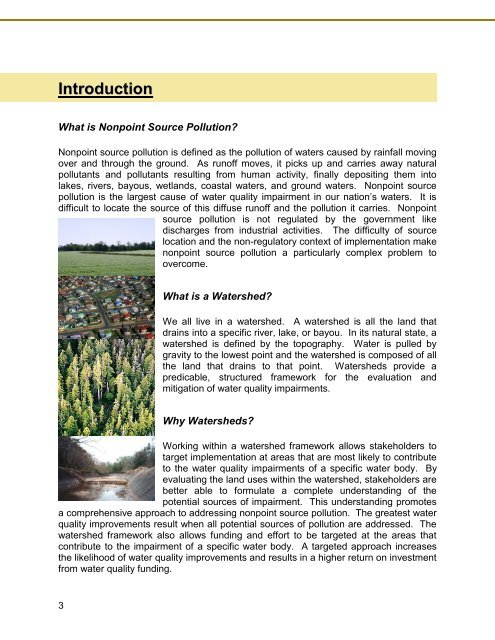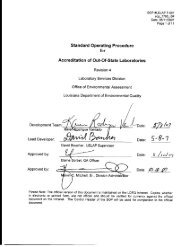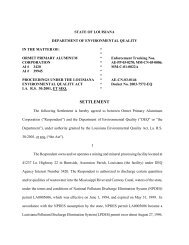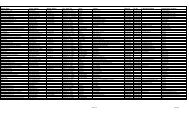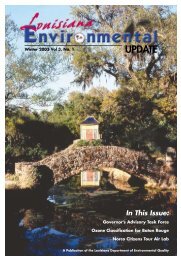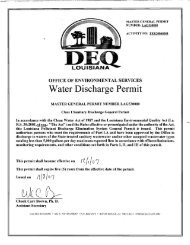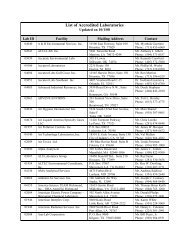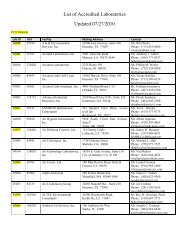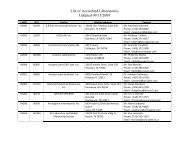Bayou Lafourche
Bayou Lafourche - LDEQ Nonpoint 319 Projects
Bayou Lafourche - LDEQ Nonpoint 319 Projects
- No tags were found...
You also want an ePaper? Increase the reach of your titles
YUMPU automatically turns print PDFs into web optimized ePapers that Google loves.
Introduction<br />
What is Nonpoint Source Pollution?<br />
Nonpoint source pollution is defined as the pollution of waters caused by rainfall moving<br />
over and through the ground. As runoff moves, it picks up and carries away natural<br />
pollutants and pollutants resulting from human activity, finally depositing them into<br />
lakes, rivers, bayous, wetlands, coastal waters, and ground waters. Nonpoint source<br />
pollution is the largest cause of water quality impairment in our nation’s waters. It is<br />
difficult to locate the source of this diffuse runoff and the pollution it carries. Nonpoint<br />
source pollution is not regulated by the government like<br />
discharges from industrial activities. The difficulty of source<br />
location and the non-regulatory context of implementation make<br />
nonpoint source pollution a particularly complex problem to<br />
overcome.<br />
What is a Watershed?<br />
We all live in a watershed. A watershed is all the land that<br />
drains into a specific river, lake, or bayou. In its natural state, a<br />
watershed is defined by the topography. Water is pulled by<br />
gravity to the lowest point and the watershed is composed of all<br />
the land that drains to that point. Watersheds provide a<br />
predicable, structured framework for the evaluation and<br />
mitigation of water quality impairments.<br />
Why Watersheds?<br />
Working within a watershed framework allows stakeholders to<br />
target implementation at areas that are most likely to contribute<br />
to the water quality impairments of a specific water body. By<br />
evaluating the land uses within the watershed, stakeholders are<br />
better able to formulate a complete understanding of the<br />
potential sources of impairment. This understanding promotes<br />
a comprehensive approach to addressing nonpoint source pollution. The greatest water<br />
quality improvements result when all potential sources of pollution are addressed. The<br />
watershed framework also allows funding and effort to be targeted at the areas that<br />
contribute to the impairment of a specific water body. A targeted approach increases<br />
the likelihood of water quality improvements and results in a higher return on investment<br />
from water quality funding.<br />
3


